Read the chapter on VOLVO Engine Maintenance before starting work. It contains instructions on how to carry out maintenance and service operations in a safe and correct manner.
WARNING! Care and maintenance work should be done with the engine stopped unless otherwise specified. Stop the engine before opening or removing the engine hatch/hood. Make it impossible to start the engine by removing the start key and cutting the system voltage with the main switches.
Volvo Engine Orientation
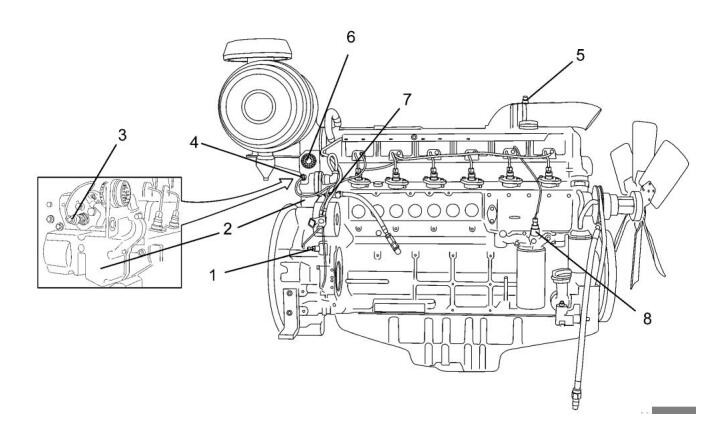
1 Engine speed sensor, camshaft
2 Engine speed regulator / actuator
3 Coolant temperature sensor
4 Boost pressure sensor, 3 pin *
5 Boost pressure sensor, 4 pin *
6 Connection to control unit
7 Fuel temperature sensor
8 Oil pressure sensor
* Only one type of sensor is used
Engine, General
Air filter, Check / replace
The air filter should be replaced when the indicator remains in the red field when the engine has stopped. Reset the gauge after replacing the indicator by pressing the button.
NOTICE! The filter should not be touched until the indicator displays the red field. Scrap the old filter. Do not clean or reuse.
IMPORTANT! In continuous use the air cleaner should be checked every 8 hours. When running in extremely dirty environments, coal mines and quarries for example, special air cleaners are required (not available from Volvo Penta).
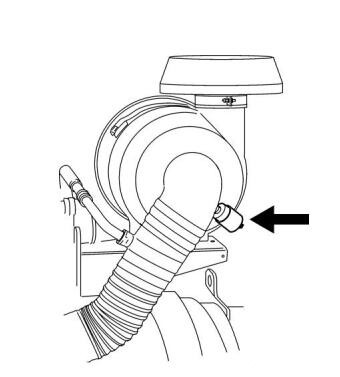
Charge Air Pipe, Leakage Check
Inspect the condition of the charge air hoses, hose union s and clamp condition for cracks and other damage. Change as necessary.
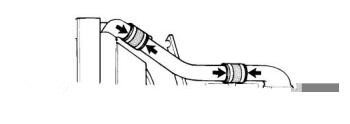
Drive belts, checking and adjusting
Checks and any adjustments must be carried out after operations, when the belts are hot. Loosen the bolts (A) before tightening the alternator belts. It must be possible to depress the drive belt about 10 mm between the pulleys. Worn belts working in tandem must be replaced simultaneously.
The belt tensioners on TAD620VE engines have automatic belt tensioners and do not require adjustment.
TD520GE, TAD530/531/532GE, TD720GE, TAD720/721TAD722VE and TAD730/731/732/733GE have mechanical belt tensioners.
Always check belt condition.Check the condition of the drive belts. Replace as necessary.
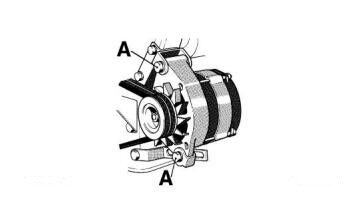
Lubrication System
Oil change intervals may vary according to the lubrication oil grade, fuel sulfur content and running conditions. Refer to Technical data, Lubrication system.
The oil change interval may under certain conditions be increased. To see if the engine complies Volvo Penta oil analysis needs to be performed. Contact your Volvo Penta dealer for further information.
NOTICE! Oil change intervals must never exceed a period of 12 months.
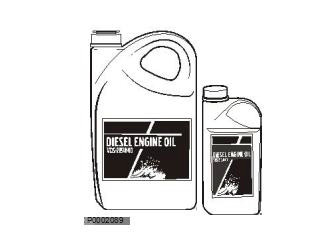
Oil level, checking and topping up
Ensure that the level lies between MIN and MAX markings.
IMPORTANT! In continuous use the oil level should be checked every 8 hours.
When checking the oil level on a stationery engine, read off the side of the dip stick marked “STOP” (at earliest 3 minutes after engine stop).
A check can also be carried out when the engine is running. Read off the dip stick side marked “OPERATING”.
WARNING! Working with or approaching a running engine is a safety risk. Watch out for rotating components and hot surfaces.
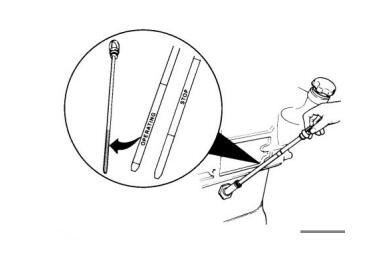
Oil filter, Change
Always follow the recommended oil change interval and always change the oil filter during oil changes. On static engines the drain plug must not be removed. Use an oil drain pump to pump the oil out.
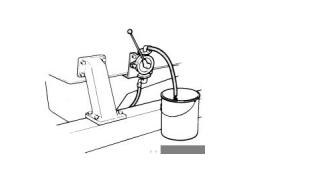
1. Clean the oil filter holder thoroughly to avoid dirt entering when new filters are installed.
2. Run the engine until warm.
WARNING! Hot oil and hot surfaces can cause burns.
3. Remove the drain plug. Drain the oil.
4. Install the drain plug with a new gasket.
5. Remove the filter (1). Check that the gaskets do not remain in place on the engine.
6. Fill the new the filters with engine oil and brush engine oil on the gaskets. Screw the filters on by hand until the gaskets touch the contact surface. Then turn the filter a further half turn. Not more.
7. Fill with oil to the correct level. Do not fill above the MAX level.
8. Start the engine and let it idle. Check that the oil pressure is normal.
9. Stop the engine. Check that there is no oil leakage around the filters. Top up with oil as necessary.
Collect the old oil and old filters and hand them to a re-cycling station.
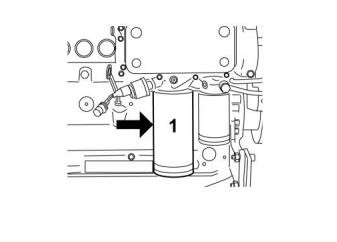
Engine Oil, Change
Always follow the recommended oil change interval and always change the oil filter in connection with oil changes. On static engines the drain plug must not be removed. Use an oil drain pump to pump the oil out.
WARNING! Hot oil and hot surfaces can cause burns.
1 Run the engine until warm.
2 Remove the drain plug. Drain the oil.
NOTICE! Collect the old oil and old filters and hand them to a re-cycling station.
3 Install the drain plug with a new gasket.
4 Change the oil filter according to the Oil filter, Change page 39 instruction.
5 Fill oil to the correct level.
NOTICE! Do not fill above the MAX level.
6 Start the engine and let it idle. Check that the oil pressure is normal.
7 Stop the engine. Check that there is no oil leakage around the filters. Top up with oil as necessary.
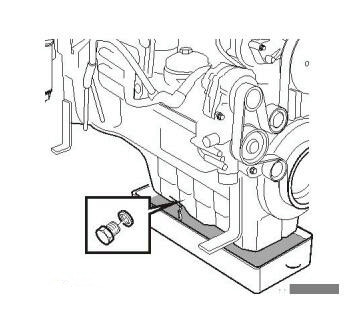
Fuel System
Only use the grades of fuel recommended in the fuel specification. Always observe the greatest cleanliness during re-fueling and work on the fuel system.
All work on the engine injection system must be carried out by an authorized workshop. If the seal on the injection pump is broken by an unauthorized person, all warranties are void.
WARNING! Fire hazard. When carrying out work on the fuel system make sure the engine is cold. A fuel spill onto a hot surface or an electrical component can cause a fire. Store fuel soaked rags so that they cannot cause fire.
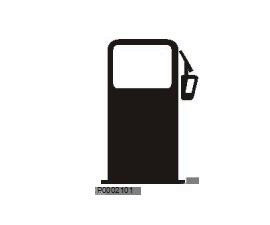
Fuel pre-filter
The fuel pre-filter is an optional extra. Position a container under the fuel filter. Drain off water and contaminants using the cock/plug at the bottom.
NOTICE! Fuel pre-filter is standard on 420–733.
CAUTION! Open the tap with caution. Hot fuel can spray out in any direction.
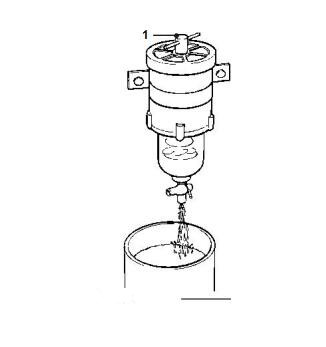
Fuel pre-filter. Filter insert replacement
1. Close fuel cock at the fuel tank. Position a container under the fuel filter.
2. Unscrew the screw (1) to remove the cover. Replace insert and reinstall cover. Open fuel cock. Bleed fuel system.
NOTICE! Take the old filter to a suitable disposal point.
3. Start the engine and check for leaks.
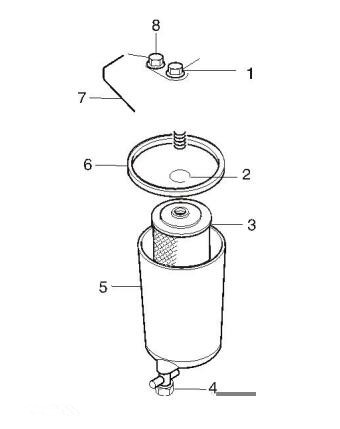
Cleaning fuel pre-filter:
• Close fuel stopcock.
• Place the fuel pan beneath the preliminary fuel filter.
• Remove drain plug (4) and drain off fuel.
• Unscrew clamping screw (1), remove filter housing (5) with filter insert (3).
• Clean sealing surface of the filter bracket (7) and filter insert housing (5) of any dirt.
• Insert new sealing ring (6) and filter insert (3) (change as necessary). – Push the filter insert up to approx. 3 cm over the edge of the housing onto the guide in the filter housing (5).
• Press filter housing (5) with filter insert (3) and sealing ring (6) against the filter console (7) and screw into place with clamping screw 1 (tightening torque 25 Nm).
Note: it must be possible to push the upper seal (2) on filter insert (3) over the guide bracket on filter console (7).
• Tighten drain plug (4).
• Open fuel stopcock.
• Check for leaks after the engine has been started.
Fuel system, bleeding
1. Open the hand pump (1), by pressing it in and turning it counter-clockwise.
2. Purge the fuel system by pumping at least 250 strokes on the hand pump. Pump rapidly, to maintain pressure in the pump.
NOTICE! Purging is not complete while resistance is felt in the pump.
3. Close the hand pump (1) by pressing it in and turning it clockwise.
4. Start the engine and let it idle for at least 5 minutes, before speed is increased.
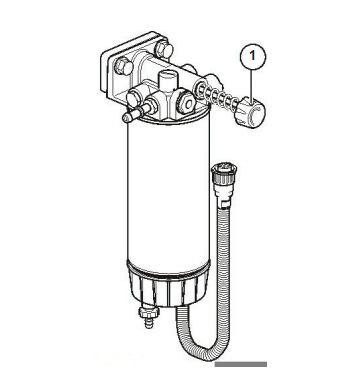
Copyright © Guangxi Dingbo Generator Set Manufacturing Co., Ltd. All Rights Reserved | Sitemap
Update cookies preferences